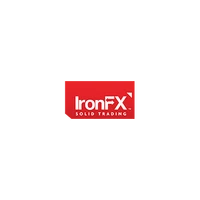Enjoy reading this guide on ETF trading for beginners.
What are ETFs
Before trading on an instrument it is good to know it more in depth. So let's start this course by explaining what ETFs are. ETF stands for Exchange Traded Fund and they are special funds with some interesting features:
- They have the aim of replicating the performance of a reference index (technically called benchmark)
- Their shares are traded on the stock exchange like shares
- They present low risk due to diversification
- They can be structured, or managed with specific administration policies
- They can pay dividends
The ETF units represent units of the fund, which comprises various stocks. The fund's objective is to replicate the performance of a reference index as best as possible, which can be an index relating to the stock exchange, the commodity exchange, etc.
The ETF fund that tracks a reference index aims to replicate that reference index. Take as an example the famous ISHARES EO STOXX 50 ETFs, whose goal is to replicate the performance of the EUROSTOXX 50 index as much as possible.
To do this, the fund managers will compose it of stocks that overall are able to replicate the performance of the benchmark at best, with a maximum deviation of 2% (on a daily basis). Some ETFs are characterized by reverse replication (replicate the title but in the opposite direction), as well as leveraged replication, as we will see in the course of this ETF guide for beginners.
The management of the ETF, therefore, has the primary objective of replicating the reference index, called the benchmark, as closely as possible. The operations whereby the managers try to bring the ETF's price as close as possible to that of the replicated index is called rebalancing.
Where there are compositions of ETFs that include dividend- paying stocks, the benefits of these will then be projected onto the owners of the ETF shares. In this regard, distribution ETFs (which pay dividends) and accumulation ETFs (which reinvest them in the fund) must be distinguished.



Types of ETFs
ETFs can be of various types, including structured and leveraged.
The structured ETFs are characterized by a more complex management, through:
- more elaborate portfolio protection tools
- implementation of more elaborate investment strategies including buy-write or covered calls
- the possibility of reverse replication of the benchmark index
The Leveraged ETFs are ETFs that apply leverage to the benchmark. Their goal is not to replicate the performance of the benchmark but a multiple of it.
ETF Trading Guide for Beginners to Expert Traders
An ETF, or exchange-traded fund, is a financial security that tracks an index, commodity or basket of assets like an index fund. ETF trading is available for investors to trade both on the stock market as well as over-the-counter markets. To get a full glance at how forex and stocks trading works, traders can read our free trading guides.
An ETF tracking an index often holds all of the stocks in that index. For example, SPY ETF mimics the S&P 500 Index(SPX). The price of ETFs can be influenced by supply and demand just like share prices. ETFs have actually gained much popularity because they are traded throughout normal business hours when their underlying indices are also being traded. Stocks represent shares in individual companies whereas ETFs provide exposure to entire indices at once. They are easy to buy and sell ETFs have become a useful tool for many traders.
In ETF trading, an ETF is sold by its issuer at net asset value (NAV) on the stock market. Traders can also have a look on our stock trading guide for beginners and guide on forex trading to become a pro trader. ETF investors, both institutional and individual, can look up an ETF on their respective ETF providers' websites. ETFs provide high liquidity because they are listed and traded on major exchanges like stocks on the NYSE or NASDAQ.
Additionally, ETFs often offer lower fees as compared to purchasing all of the components in an index individually as some ETFs will charge between 0-2% as annual management fees whereas mutual funds can cost upwards of 5%. This marginal difference may not seem large but over time it will accumulate into substantial savings.
ETFs, like mutual funds, can also be bought and sold throughout the day when the stock market is open. ETFs allow investors to concentrate on their investment strategy instead of worrying about selecting individual investments.
ETF trading has become increasingly popular with many traders because ETFs trade just like stocks and futures contracts in that they see price movement in both directions or up and down and ETF profits can be generated by shorting an ETF just as one would short a stock or future contract.
In order for ETFs to track the performance of their respective indices, ETFs must hold all of the securities from these indices. They do not engage in any hedging strategies besides holding the components of the index they follow. In addition to this, ETFs are also passively managed ETF trading strategies which means that an ETF portfolio is rebalanced by the ETF issuer at set intervals. Also, ETFs must distribute dividends to shareholders just like mutual funds ETF profits are taxed according to their respective tax bracket.
An ETF will typically have higher turnover rates than a mutual fund because over time if the stocks in an index change so too do the composition of an ETF tracking it.
The main reason for this is that ETFs track index and individual companies while mutual funds invest in other mutual funds. Mutual fund managers are constantly moving money around between different investment classes. ETFs don't engage in any hedging or sector rotation strategy tactics. Thus, the only difference between them is ETFs are listed and traded on ETF providers while mutual funds transact in in-kind. ETFs typically have higher turnover rates.



An ETF is a financial security that tracks an index, commodity, or basket of assets like an ETF trading strategy fund. ETFs provide exposure to entire indices at once and give investors the ability to concentrate on their investment strategy without worrying about selecting individual securities because ETFs are passively managed.
ETFs are able to track their respective indices because they must hold all of the securities from these indices. ETFs typically have higher turnover rates than mutual funds which engage in sector rotation strategies. An ETF trades just like a stock would whereas mutual funds trade based off on in-kind exchanges because ETF portfolios are rebalanced by the ETF issuer at set intervals. ETFs offer lower fees than mutual funds and are a useful tool for many traders because they provide high liquidity and can be bought and sold throughout the day when the stock market is open.
Are ETFs Regulated?
This ETF trading for beginners answers the question. The vast majority of exchange-traded funds are registered with the US Security Exchange Commision (SEC) and, like mutual funds, must comply with the applicable provisions of the Investment Company Act of 1940 and exempt orders issued under that law. Several regulations apply to commodity-based ETFs, which hold around 3% of the ETF's assets.
The ETFs based on commodities investing in futures on commodities are regulated by the Commodity Futures Trading Commission (CFTC) , while those which invest exclusively in physical commodities are regulated by the SEC under the Securities Act of 1933. For those who have an interest in investing and trading in cryptocurrencies as it is not regulated, check out our crypto trading guide.
ETF Pros and Cons
What are the benefits of trading ETFs? This guide on ETF trading for beginners provides you with a short bulleted list of both the advantages and disadvantages.
The advantages of trading ETFs:
Low fees: Investing in a single ETF is less expensive than building a diversified portfolio yourself;
Diversification: Since ETFs are composed of a basket of different Securities, they allow you to trade in a diversified and economical way;
Flexibility: ETFs have lower charges, they can be traded in both Long and Short, and very importantly they do not have a maturity;
Tax advantages: Passive management of ETFs offers the possibility of paying lower charges than active management;
Investment protection: ETFs are generally safer than investment funds, as the assets of the ETFs are autonomous and completely separate from that of the issuer (there are no risk assets for the assets of the ETF in the event of bankruptcy of an issuer).
The disadvantages of trading ETFs:
- Deviation of the price of the ETF from that of the underlying;
- Diversification is very beneficial, but to reap the benefits you only need to choose promising stocks.
As you have noticed from this guide for ETF trading for beginners, the advantages are greater than the disadvantages of trading ETFs. Well now that we have clarified in a simple and concise way what ETFs are, let's see together which are the best brokers to trade on them.
How ETFs are Traded
ETFs are traded on the stock exchange just like shares and this also happens on the US Stock Exchange, as well as in other major international trading centers. The fact that they are traded on the stock exchange differentiates them from mutual funds, which instead usually value at the end of the day. Trading on ETFs on the other hand is continuous, in the same way as shares, so their value, their price, varies continuously throughout the trading day.



The management company of the ETF will continuously bring the fund's share back to the level of the reference index (whose prices also change continuously). The deviation from the index should generally not exceed 2%.
ETF Guide for Beginners
Let's move on to ETF trading. We’ve prepared this ETF guide for beginners because we’ve always received questions like; how do you trade on ETFs? How do you trade ETFs online, from the comfort of your home or office computer or from your mobile device?
The answer is simple: via CFDs. As we will see later in this ETF trading guide, CFDs are financial instruments that replicate the performance of other financial instruments, among which ETFs can also be chosen. To operate, you need to access a trading platform, made available by the broker with whom you open an online trading account. We will also talk about reliable platforms in this ETF trading guide.
Before getting to CFDs, however, it is good to complete the discussion on ETFs, which, although synthetic and "panoramic", cannot fail to include the variety of ETFs available on the market and on which you can also trade online.
What ETFs can Beginners Invest in?
In this section of explaining ETF trading for beginners, we highlight the variety of ETFs you can invest in or trade in online. Indeed, one of the best features of this financial instrument is the wide range of sectors on which attention can be drawn and which can be taken advantage of.
Commodity ETFs
ETF commodity refers to raw materials, among them we could include agricultural raw materials, metals and those relating to the energy field.
Examples of Agricultural Commodities ETFs are those that follow indices that refer to multiple agricultural productions including coffee, wheat, sugar, soy, etc. Examples of “metals” commodities can be Gold ETFs (the most popular) as well as Silver ETFs and so on. As far as energy commodities are concerned, among the most traded of all are the Oil ETFs and Natural Gas ETFs.
Equity ETFs
Equity ETFs are Exchange Traded Funds that are based on equity securities, i.e. the shares issued by the publicly traded company. Their goal is to provide investment returns that match the price and return performance, gross of fees and commissions, of publicly traded securities in a given market in a given sector.
Therefore, equity ETFs aim to replicate a benchmark index relating to shares of a given sector or a specific type.
For example, there are ETFs that seek to replicate indices based on the shares of a specific stock market, or issued by companies operating in the same sector (e.g. production of a good or provision of a service).
It should be noted that many equity ETFs are of the "daily" type, that is, designed for same-day trading, in order to have a more precise replication of the benchmark index.
Metals ETFs
The metals ETFs, although they may be included among those related to raw materials, actually require specific attention. Gold ETFs, for example, are among the most requested ETFs on the market, by investors and traders.
Among the Metals ETFs we can include, in addition to those relating to precious metals, also those relating to industrial metals or specific to the industry (and securities of related companies).
Indices ETFs
The index ETFs referenced by ETFs generally referred to as “Index ETFs” can be of various kinds. They can in fact refer to stock market indices or to indices that group securities of a particular category, sector or area.
Energy ETFs
The Energy ETFs are those that replicate indexes that can include titles that refer to the energy market, or to the extraction of oil and natural gas companies, as well as other energy sources. It should be noted that in addition to Oil ETFs and Natural Gas ETFs, Alternative Energy ETFs have also come forward.
Currency ETFs
The ETF Exchange rates or ETF Currencies, ETFs are those that refer to the currency market. Their goal is to replicate the performance of a currency or currency index.



Emerging countries ETFs
The ETF Emerging Countries , very popular in the last decade, are the ETFs that are based on the so-called emerging economies or the MSCI Emerging Markets Index.
The MSCI includes numerous countries including Brazil, Chile, Colombia, Mexico, Peru, Czech Republic, Egypt, Greece, Hungary, Poland, Qatar, Russia, South Africa, Turkey, United Arab Emirates, China, India, Indonesia, South Korea , Malaysia, Philippines, Taiwan and Thailand.
Leveraged ETFs
The Leveraged ETF is characterized by the presence of the leverage, therefore, they may cover all types described so far.
We have seen that ETFs have the objective of replicating the performance of a given index. Leveraged ETFs, on the other hand, are characterized by the objective of replicating a performance equal to 2 or 3 times that of the underlying index.
Other Leveraged ETFs, called Inverse Leveraged, on the contrary, aim to replicate a performance equal to 2 or 3 times the opposite of the index performance itself.
Trading ETFs with CFDs
So far, we have learnt from this ETF trading for beginners what ETFs are, how they work and the types of ETFs on the market. Let's now move on to discuss the financial instrument that allows you to trade on ETFs online, from the comfort of your home or from your mobile device.
The financial instrument in question is the CFD or Contract for Difference. This tool was created in the 90s with the intention of creating a tool that would allow the average user to operate on the markets with small capital.
But how does CFD work? Its peculiarity is that of replicating the performance of an underlying financial instrument, which can be a share, a future, but also an ETF.



Trading CFDs with ETFs means just that: trading CFDs that track the performance of ETFs. The curious thing is that in turn, ETFs track the performance of other indices.
How ETF CFD trading works
Want to know how ETF trading for beginners works? In trading with CFDs it is possible to trade upwards or downwards depending on whether a rise or fall in the price is expected.
When you trade, you can in fact open two types of positions:
Buy Position (also called Long): it is the bullish position. You will have to open this type of position in case you anticipate a price increase after the moment of opening the buy position. If the price actually rises, you profit, otherwise you make a loss. This is the old "buy low, sell high".
Selling Position (also called Short): it is the bearish position. You will need to open this type of position in case you anticipate a fall in price after the opening of the sell position. In this case the economic result is the other way around, so if the price actually suffers a loss you go to profit, otherwise you face a loss.
When trading you will notice differences between the value of the CFDs and the market prices. In this regard, to find the market prices you can click on the details of the asset on the broker's website.
These (small) differences are due to the online broker adding the spread as compensation for its brokerage services and provision of CFDs. Spreads are automatically deducted when the position is opened. They are on average much lower than the commissions required by traditional brokers.
CFD ETF Trading Tools
How is it possible to trade CFDs on ETFs from home or from mobile? Through the trading platforms. The trading platform is nothing more than a virtual environment or software through which orders can be given to the broker.
What orders? Opening of buy and sell positions, stop loss, stop limit and more. To access a CFD trading platform on ETFs, you can proceed either via a browser or via a mobile application or software.
An example of a trading platform that allows you to trade ETFs with CFDs is the eToro platform
ETF Trading Broker
When you want to trade ETFs online, it is good to select a well-known platform, with a stable and reliable broker firm, authorized by the relevant regulatory authorities. For this, we recommend that you also evaluate these trading platforms, which you have probably already heard of.
Anyone who has done a search for brokers at least once to trade online has come across eToro at least once. Obviously, because it is one of the most important companies internationally in the field of trading and specifically in trading with CFDs. When it comes to ETFs, it offers a wide range of choices on Commodity ETFs and Index ETFs.



With regard to ETF Indices, these include numerous types of indices, as reported in our specific article. As for the platform, the eToro interface is characterized by an easy-to-use display. In fact, it turns out to discover all the features present on the platform and the way to activate them. eToro offers a free demo account with no deposit required. The real account requires a minimum deposit of $100, a sum that you can use entirely to trade.
ETF Trading for Beginners - Conclusion
With this ETF trading guide we hope to have made you appreciate more the ETF financial instrument, which is usually overshadowed but which, as we have seen, proves to be interesting and offers advantages that must certainly be taken into account. To start getting familiar with ETFs or simply out of curiosity, you can try without obligation using a demo mode platform, which will allow you to trade without making any deposit.

